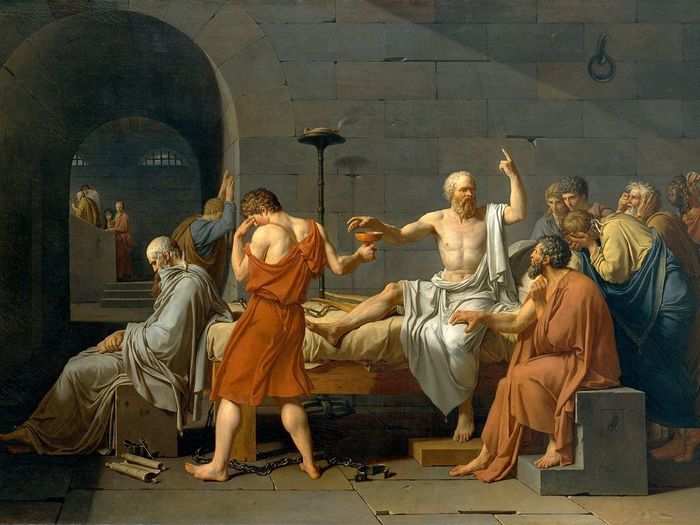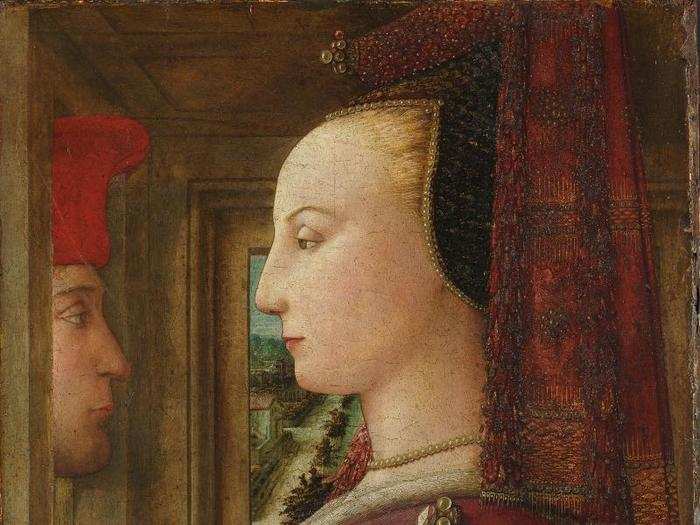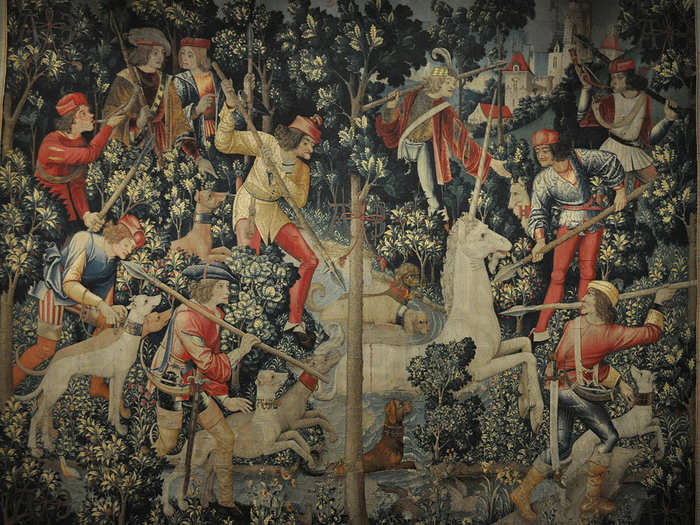The 16 greatest masterpieces at the Met right now
"The Harvesters" by Pieter Bruegel the Elder.

The Yves Saint Laurent pieces at the Met’s Costume Institute show Manus x Machina: Fashion in an Age of Technology (on view through August).

"Yves Saint Laurent was the ultimate French couturier who redefined what is sexy with his 'Le Smoking' tuxedo for women and ultrachic looks like this silk and bird of paradise feather dress."
Portrait of Lukas Spielhausen by Lucas Cranach the Elder.

"The beard has made a comeback and nowhere is it more striking than in Lucas Cranach the Elder’s detailed portrait of Lukas Spielhausen, a high-ranking lawyer in 16th-century Saxony."
Fragment of a Queen's Face (ca. 1353–1336 B.C.).

"Of all the extraordinary objects in the Met’s Egyptian collection, this fragment of a queen’s face blows me away with its exquisite and sensuous modeling. The yellow jasper seems as palpable as flesh and the sculpture is as modern as a Brancusi."
"Cypresses" (1889) by Vincent van Gogh.

"Only Vincent van Gogh can turn a landscape into an emotional ride. With every brushstroke, the energy of the cypresses and even the sky comes alive. During his life he only sold one painting, but now we recognize that he ?was a genius ahead of his time. Would you have collected a van Gogh when he was an unknown?"
"Woman with a Parrot" (1866) by Gustave Courbet.

"Nineteenth-century bad boy Gustave Courbet made waves in the French Academy with his paintings of stonebreakers, a funeral, and disheveled nudes. Bed hair, discarded clothing, and an overeager parrot—scandale! A masterwork of wild abandon."
Mosque lamp (14th century).

"Islamic glass incorporates historical techniques from Byzantine and Sasanian Empires and takes it to the next level with extraordinarily refined craftsmanship. The use of color, calligraphy, and decorative elements make mosque lamps from this period glitter like jewelry (which you’ll also discover at the Met)!
"Ugolino and His Sons" (1865–67) by JeanBaptiste Carpeaux.

"This sculpture depicts the gory tale of Ugolino and his sons starving to death and his sons begging their dad to eat them! See Dante’s Inferno Canto 33. The gnawing hunger and hellish dilemma are powerfully conveyed in this Carpeaux masterpiece."
"Manuel Osorio Manrique de Zun~iga" (1784–1792) by Goya.

"Goya captures the magic and innocence of childhood in this portrait of Manuel Osorio Manrique de Zun~iga. The three cats about to devour the magpie create a tension that makes the painting feel so ominous."
Head of a Queen Mother (Iyoba) from Nigeria (1750–1800).

"This beautiful Benin sculpture of the head of a Queen Mother (Iyoba) from the 18th century is such a strong example of the aesthetic influence African art has had on artists everywhere. Being able to be inspired by artists and cultures of all time periods is what makes the Met one of the most extraordinary institutions in the world."
“Madame X” (1883-1884) by John Singer Sargent.

"American artist John Singer Sargent originally painted this brazen portrait of Madame Pierre Gautreau with one of the shoulder straps off her shoulder and exhibited it at the Salon of 1884. Ridiculed at the Salon, the work stayed in Sargent’s possession for over 30 years until he sold it to the Met saying it was 'the best thing [he] has done.' We agree."
“Death of Socrates” (1787) by Jacques Louis David.

"In this Neoclassical masterpiece, David portrays the moment before Socrates drinks hemlock instead of renouncing his philosophy. Choosing to die for one’s belief is a timeless subject, and it was very relevant in tumultuous 18th-century France."
“Portrait of a Woman with a Man at a Casement” (ca. 1440) by Fra Filippo Lippi.

"Even though is this the earliest surviving double portrait in Italy, there is something utterly modern about the almost geometric forms and the mysterious sliver of a man’s face in the window. Embroidered on the woman’s sleeve is the word 'faithful' (lealta), so is the?????? man her betrothed or a new gentleman caller?"
“Buddha of Medicine Bhaishajyaguru (Yaoshi fo),” Yuan Dynasty, (ca. 1319).

"Who does not love Eros, the god of love, especially when depicted as an adorable, sleeping boy? The astounding naturalism of ancient sculpture wows us even today, especially in the Met’s current exhibition of 'Pergamon' showcasing the marvels of artistic achievement in three centuries between Alexander's death, in 323 B.C., and the establishment of the Roman Empire, in the first century B.C."
"Bronze Statue of Eros Sleeping," Hellenistic Period, 3rd-2nd century BC.

"Who does not love Eros, the god of love, especially when depicted as an adorable, sleeping boy? The astounding naturalism of ancient sculpture wows us even today, especially in the Met’s current exhibition of 'Pergamon' showcasing the marvels of artistic achievement in three centuries between Alexander's death, in 323 B.C., and the establishment of the Roman Empire, in the first century B.C."
"The Unicorn is Attacked" (from the Unicorn Tapestries in the Cloisters).

"Of the entire series in the Unicorn Tapestries, this is the most dramatic—when the hunters attack the Unicorn. Tapestries were the great art form of Europe during this time and the artistry expressed here is off the charts. Definitely worth the trip to the Cloisters to experience the magnificence of these works in person."
Popular Right Now
Popular Keywords
Advertisement